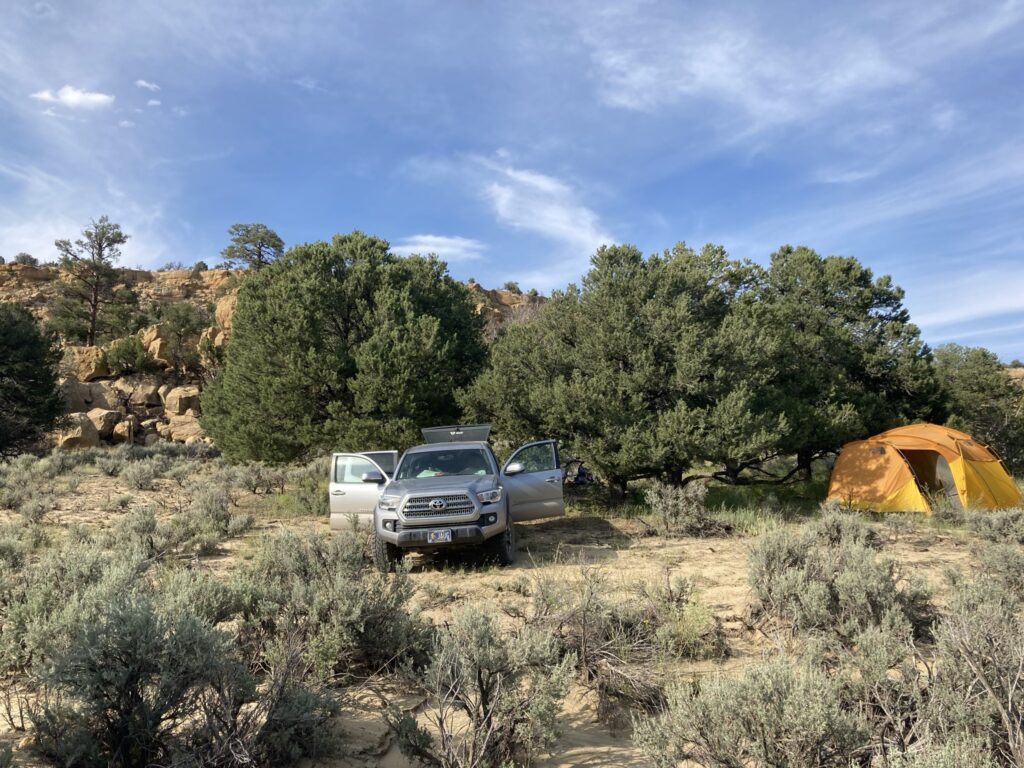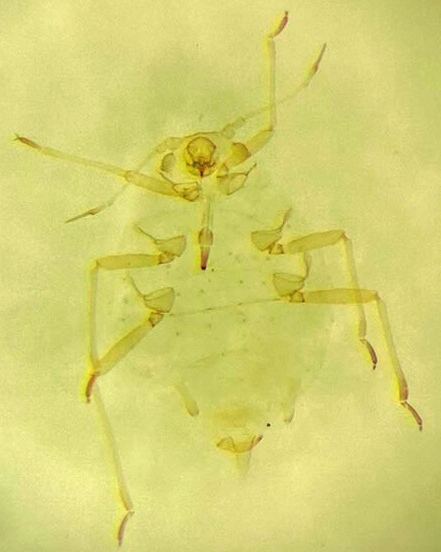Landisaphis Knowlton and Ma
I have special fondness for this genus. Back in 1992 I was given some slides of an unidentified aphid that had been reared in the lab for several generations by researchers in central Washington State, the colony being started from specimens collected near Quincy, WA. The researchers thought I might be interested and also wanted to know what species the aphid was. So, I studied all the books and papers I could find (recall that 1992 was before the internet) and was completely stumped as to identification. Then in 1993 my major professors generously supported my trip to the international aphid symposium in Czechia. On the way there I spent a couple days in London studying aphids at The Natural History Museum, visiting with Roger Blackman. Sadly, Victor Eastop was out of the country that week. Roger took a slide of my mystery aphid of Washington and puzzled for hours. He was also stumped, but promised to show the specimens to Victor when he returned to the museum. A few weeks after I got home, Victor wrote me to tell me he’d made the identification: my aphid was Landisaphis davisi Knowlton and Ma, which had not been collected since its original description in 1949 based on specimens from Grant County, Washington (the same county as Quincy).
Some years after moving to Moses Lake, WA (Grant County!) in 1999 I started hunting for this aphid, looking on its then-known hosts such as the mustards Capsella and Descurainia plus Chenopodium. Having no success for several years, in 2008 I convinced my then-wife Patti to let a patch of Chenopodium album grow in her garden (this plant is a troublesome invasive weed in the U.S.) with the aim of attracting Landisaphis. Somewhat surprisingly, it was a success! On the 26th of July I was able to secure a single specimen of Landisaphis together with a specimen of Abstrusomyzus. So, the continued presence of Landisaphis in Grant County was confirmed, as was its ability to use the introduced C. album as host. In the following few years I was able to find the aphid in a few more places in Grant County on both C. album and Descurainia.
I enjoyed updating Victor on these finds, as he was curious about this aphid and the facts that it was known only from introduced weeds and from only a single county in Washington State. These facts vexed me as well. I searched vigorously for Landisaphis on native mustards and chenopodes for another several years without success. Sadly, Victor died in 2012 and was not able to hear of the next chapter of this story.
In 2021 Gina and I took a camping trip to northern New Mexico, including a couple nights west of Cuba at the field site of Gina’s master’s thesis project. The habitat is a mixture of sagebrush community, piñon pine/juniper, with some ponderosa pine habitat around the edges (see the photo).

Under the larger piñon and juniper trees in this area lives a short, thin, spindly Chenopodium. Because of my limitations as a plant taxonomist combined with my lack of a good flora that covers New Mexico, I was not able to identify the species of Chenopodium. Landisaphis was found in low numbers on these plants, together with Hayhurstia. So, it appears that the conundrum of the natural host plant of this aphid has been solved (except that I haven’t provided a species identification of the plant!). One might then wonder about the natural habitat — is it piñon/juniper deserts of the Southwest, the sagebrush scrub of the interior parts of northwestern U.S.A., or both? Those unfamiliar with Washington and Oregon are often only aware of the large amounts of rain that Seattle and Portland are known for. The land east of the Cascade Mountains, however, is very dry and its native communities in the low elevations (high elevations are forested with pines, firs, spruces, and larch) are dominated by sagebrush or a combined dominant vegetation type of juniper and sagebrush. So, northern New Mexico (e.g., near Cuba) and central Washington are actually quite similar with respect to plant communities. In fact, there are native Chenopodium species in the sagebrush habitats of eastern Oregon and Washington. So, my hypothesis is that Landisaphis‘ native hosts are Chenopodiums in sagebrush/juniper and piñon/juniper deserts of the inland west of the U.S.A. and possibly adjacent parts of Mexico and Canada.
As noted on my Hayhurstia page, I think Landisaphis and Hayhurstia may be related or better thought of as congeneric. Now that the natural ecology of Landisaphis is better understood, combined with my frequent finds of Hayhurstia in natural systems all over the west and in the same places as Landisaphis, I am even more convinced.
Alas, I don’t have any live photos of Landisaphis. I need to gear up again for bringing aphids back to the lab for photos. I’ve been a slacker on that in recent years.

